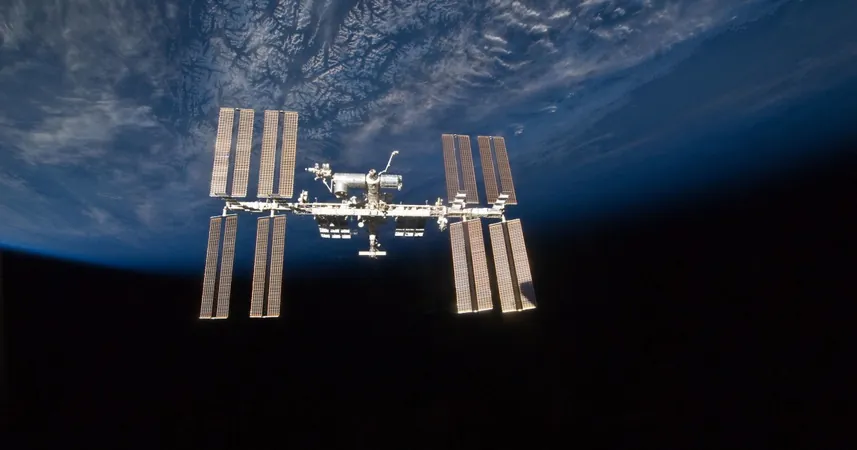
The International Space Station Dodges Danger: A Close Call with Space Debris!
2024-11-20
Author: Ming
The Prevention Maneuver
In a critical move to ensure the safety of its crew and infrastructure, the International Space Station (ISS) executed a prevention maneuver on Tuesday, November 19, as reported by NASA. The orbital facility was repositioned to steer clear of a potential collision with space debris.
Execution of the Maneuver
Using the thrusters of the Progress 89 spacecraft—a resupply vessel currently docked with the ISS—station operators conducted a brief but crucial firing of just over five minutes. This maneuver successfully elevated the station's orbit, creating a more significant safety distance from a fragment of space junk that originated from a defunct defense meteorological satellite, which had disintegrated in 2015.
Significance of the Maneuver
NASA officials stated that without this maneuver, the piece of debris could have come alarmingly close—estimated at just 2.5 miles—in its projected path alongside the ISS. This swift action employed was termed a Pre-determined Debris Avoidance Maneuver (PDAM), and it ensured that operations aboard the ISS continued uninterrupted, allowing for the scheduled launch of the Progress 90 cargo spacecraft from Kazakhstan just two days later.
The Challenge of Space Debris
The ISS typically orbits around 250 miles above Earth’s surface, a sector known for its increasing amount of space debris, which can consist of anything from spent rocket components to obsolete satellites. The urgent response highlights the acute danger posed by these fragments, as direct impacts can lead to catastrophic consequences for the space station and its astronauts.
History of Avoidance Maneuvers
In past incidents, threats from space debris have been so severe that astronauts on board have had to retreat to their spacecraft for safety, awaiting potential evacuation scenarios. Remarkably, up until the summer of 2023, the ISS has conducted a total of 37 avoidance maneuvers since its operational launch in 2000.
The Future of Space Exploration
As humanity continues to explore the cosmos and send more equipment into orbit, the challenge of managing space debris remains crucial—not just for the ISS, but for all future space missions. What does this mean for the burgeoning space tourism industry and other planned missions? Stay tuned, as space enthusiasts and experts alike keep a close watch on how humanity navigates this perilous aspect of space exploration!


 Brasil (PT)
Brasil (PT)
 Canada (EN)
Canada (EN)
 Chile (ES)
Chile (ES)
 España (ES)
España (ES)
 France (FR)
France (FR)
 Hong Kong (EN)
Hong Kong (EN)
 Italia (IT)
Italia (IT)
 日本 (JA)
日本 (JA)
 Magyarország (HU)
Magyarország (HU)
 Norge (NO)
Norge (NO)
 Polska (PL)
Polska (PL)
 Schweiz (DE)
Schweiz (DE)
 Singapore (EN)
Singapore (EN)
 Sverige (SV)
Sverige (SV)
 Suomi (FI)
Suomi (FI)
 Türkiye (TR)
Türkiye (TR)